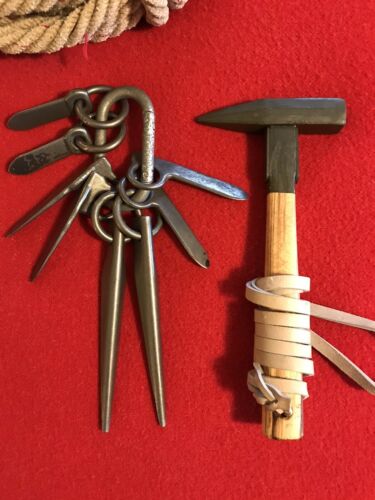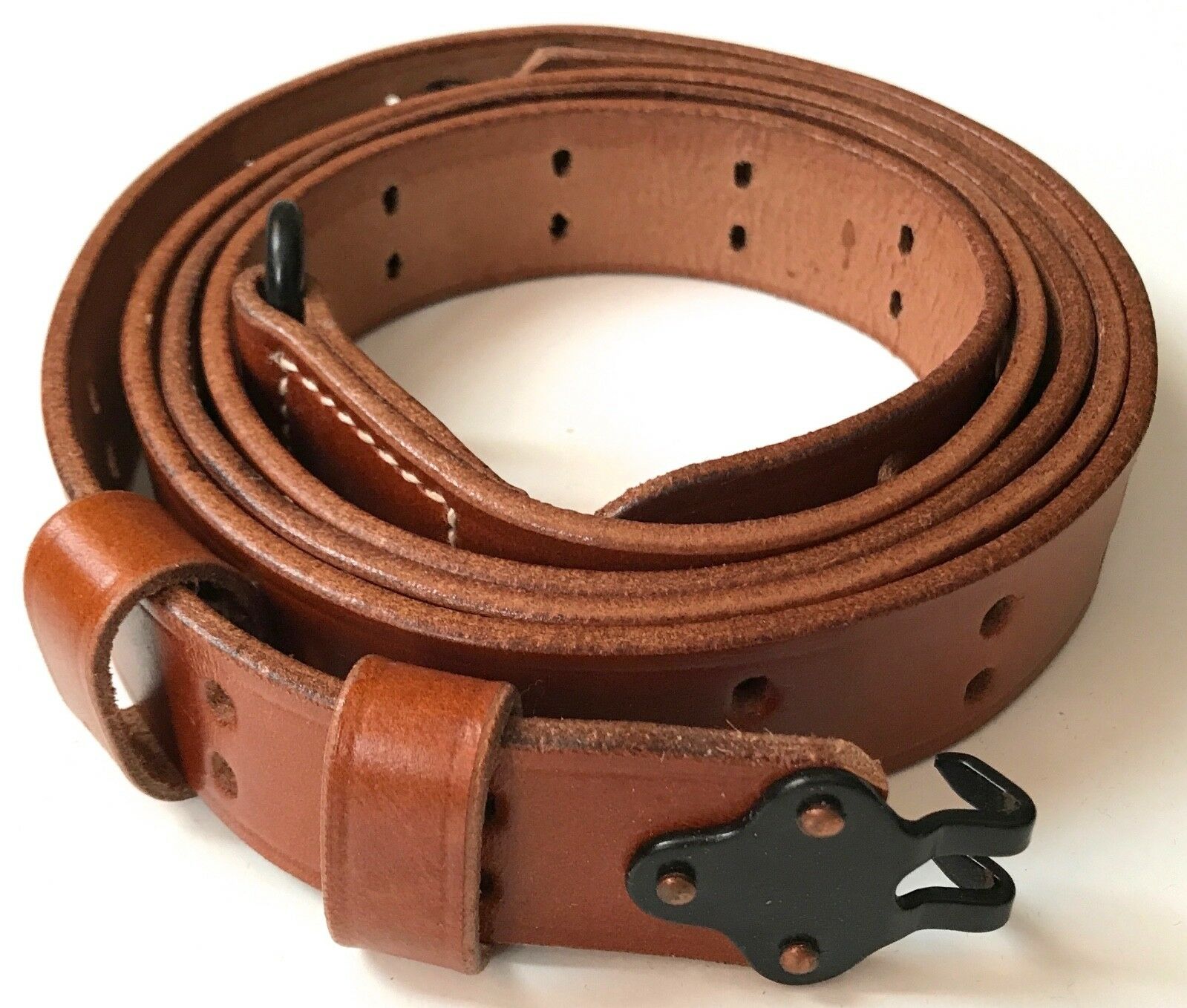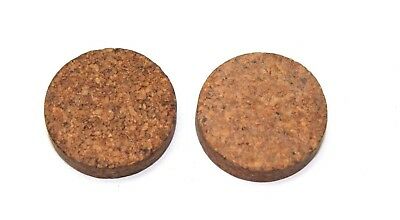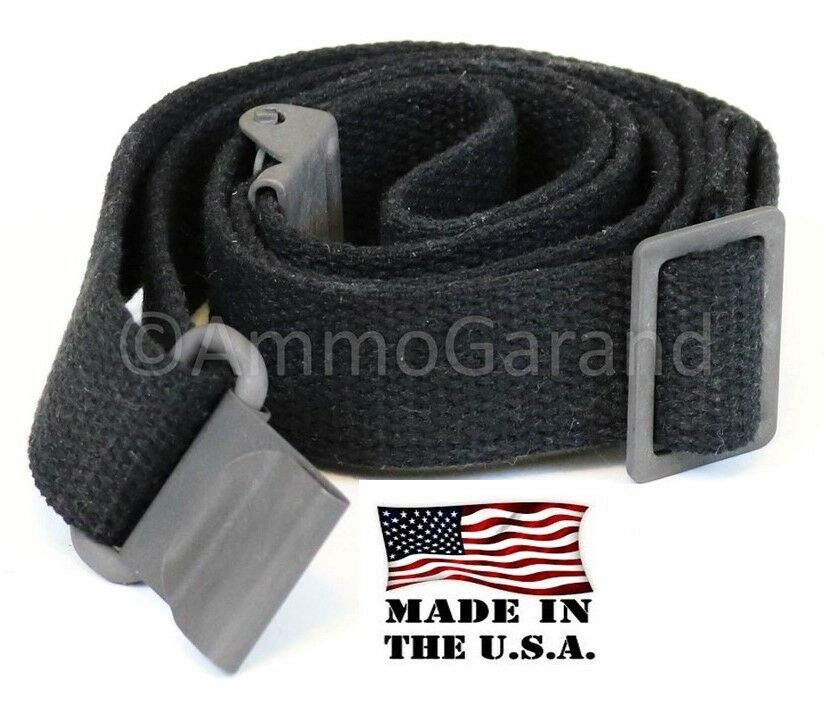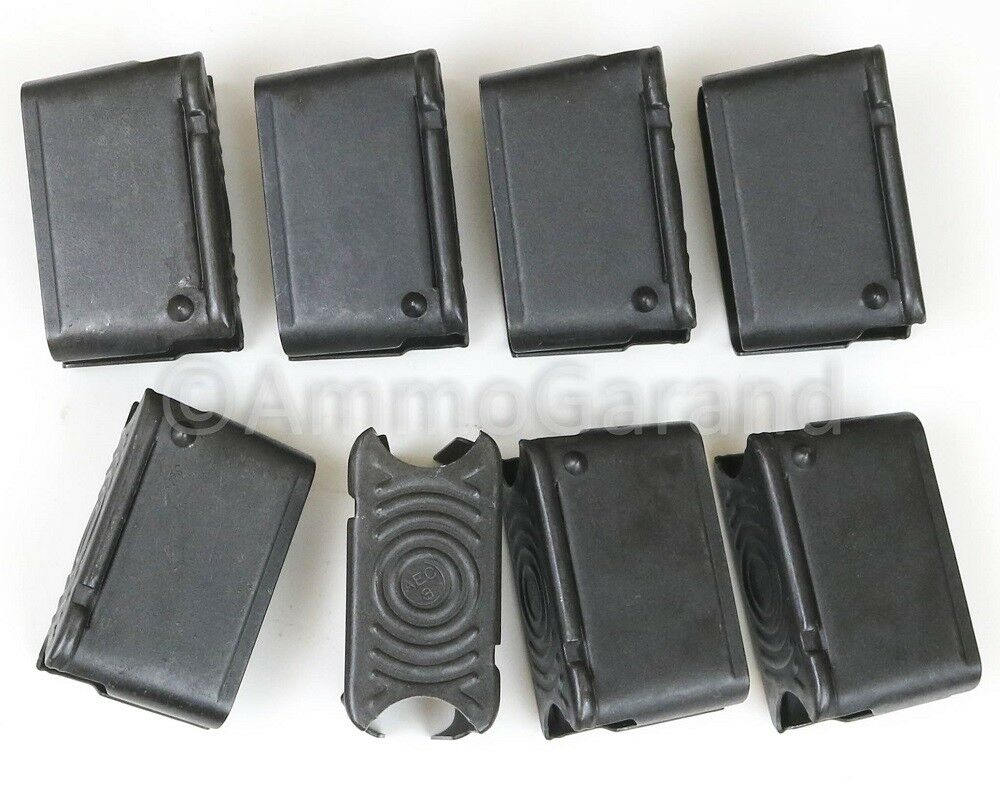-40%
WW2-model PITONS & CARABINER (Lot of 9) Mountain Climbing NOS Unissued
$ 77.88
- Description
- Size Guide
Description
WW2-model PITONS & CARABINER (Lot of 9) Mountain Climbing (4 different styles) Mint NOS Unissued condition!Here’s a complete array of what a lead climber might have carried on a short ascent. These would have been associated with the
10th Mountain Division, Camp Hale,
the
F.S.S.F.
as well as the
Rangers.
These have never been ‘hammered’ and ‘pulled’ from a face. These are OLD, but are post-war dated
“New Old Stock”
WW2 model PITONS. Needless to state, they have never sustained a "leader fall." ZERO bends, corrosion, or damage of any kind.
Included are the
4 DIFFERENT Piton styles
manufactured under contract for the Army during WW2 for rock climbing — two of each style. Each is marked
"U
.S.
" The dates range from “'
56
” to “'
77
”. Makers include, “
AMTF,” "WYOTT,” and “AMF”.
2 “Knifeblade” Pitons -- Stock No. 74-P-133-20
2 “Lost Arrow” Pitons -- Stock No. 74-P-133-15
2 “V- shaped Angle” Pitons (3/4” x 6 1/2”) -- Stock No. 74-P-133-35
2 “Ring” Pitons -- (Pointed Tip) Stock No. 74-P-133-25
1 “Steel, non-locking gate” Carabiner (marked 'U.S.
AMF 81”)
These would have served well on a single-pitch climb that presented a variety of challenges for Piton placement in cracks of varying widths and depths.
(
NOTE:
There was also an hollow-tube Steel “Ice Screw” Piton that was manufactured in limited number for ice climbing.)
These are identical in every way to the
"Soft" Iron PITONS
and the
STEEL CARABINERS
manufactured during the WW2 and listed in the wartime
QUARTER MASTER CORPS Catalog
for use by Mountain/Ski Troops, Rangers, etc., differing ONLY in the dates printed/stamped on them.
The
Cosmoline
(a black wax, petroleum-based rust-inhibitor) was washed off with gasoline revealing post-war dates ranging from of
“19
56
”
through
“1977
”.
(NOTE: The Manila Climbing Rope and the Piton Hammer are NOT included in this sale. Additionally, it is NOT recommended that the Carabiner be used for climbing today!It is NOT SAFE — it lacks a LOCKING GATE!l
*****
The History of the Piton
Although some huge spikes, ropes, and ladders were used on the very first recorded rock-climbing expedition, the ascent of
Mount
Aiguille
near Grenoble (in 1492!), the first real pitons (
French: piton, “little peg”
; German: felshaken, “hooks for rocks,” or sometimes fiechtlhaken, “Fiechtl’s hooks”) for rock-climbing were invented in Europe in the late 1800s. Initially, they were five-inch long, blade-like pieces of iron, similar to a railroad spike but flatter, bent up into a hook. The climber would hit the piton into the rock with a hammer and perhaps tie a short piece of smaller rope around the spike. On descent, the climbers lowered on their main rope from the loop or spike, hand over hand, and then the main rope was pulled and tied back into, much as we do today rappelling. The piton itself was left in place. Soon, to eliminate the smaller loop of rope, a hole was drilled in the end of the piton and a smaller iron ring inserted into the hole; these were ring pitons.
Descending a mountain has always been technically more dangerous than climbing up. During the descent after the 1865 first ascent of the
Matterhorn
, a very short fall by one climber pulled three others off, causing the deaths of four of the seven climbers in Edward Whymper’s party. Around 1900, the carabiner and body rappel had not yet been applied to climbing, so the piton was at first only ethically accepted for very short, steep descents, but not for upward progress. This hundred-year-old, arbitrary, ethical decision is the reason that we today try very hard to physically ascend a 40-foot route as freely as possible, yet don’t give a moment’s ethical thought to using aid (rappel or lowering or even a ski lift or helicopter) to go back down. Odd, right? Metaphorically, we only want to go up, get higher, ascend.
Perhaps the first modern piton appeared in 1910 when the Austrian climber Hans Fiechtl was the first to use specially made pitons forged with an eye, rather than a ring or hook. The eye was quite large at first, to accommodate a thick rope. About the same time, his partner, Otto Herzog of Munich, who was, interestingly, nicknamed Rambo for his tenacity (from German: ramponieren “to crush”), saw some metal rings on firemen and fashioned a steel carabiner for climbing to enable a leader to use a running belay as he climbed past and above his piton. This emphatically enhanced the safety of the lead climber and presumably created, at some point, the very first whippers. Parenthetically, carabiners (German:
karabinerhaken
, “hooks of carabineers,” i.e., horse soldiers with carbines) were named after a quick-release metal connector used by Italian and German cavalry of the day to connect a strap to their short rifles.
Sliding down an anchored rope for a safer descent—with the rope looped around the hip, over the opposite shoulder, and down the back (German: abseilen, literally “down-roping”)—may have been invented in 1879 by
Chamonix
guide Jean Charlet-Straton while descending after the FA of the
Dru
. But the body rappel has always been known as the Dulfersitz after the German Hans Dulfer, partner of Fiechtl and Herzog, who probably perfected and popularized the technique about 1911. These inventive Young Turks of the pre-war climbing world quickly realized that the rope-piton-carabiner combination, with the second climber braced and holding the rope, would allow significantly more daring routes to be climbed if one were allowed to use such tactics on the way up. And one might also use a “few” pitons for direct aid. A new world of rock climbing was thus born.
After World War I, pitons and carabiners slowly gained widespread use all over Continental Europe. Pitons made in Austria, France, Italy, and Germany were fabricated from somewhat harder steel alloys and sometimes plated on the outside to prevent quick oxidation. These new pitons were now tough enough to sometimes be knocked out after placement, and possibly be reused two or three times, an obvious logistic advantage on very long routes, as well as saving money for some dirtbag Euros of the 1920s and ‘30s.
A blade piton for a crack larger than, say, half an inch, would have been very heavy, so the lighter, V-shaped angle piton, usually with a ring, was introduced for wider cracks, up to an inch and a half. In France, climbers used wooden wedges (Coins de Bois) for aid in very wide cracks, up to 5 or 6 inches. The first important piton uses in the United States were by Albert Ellingwood on the technical volcanic plug of
Lizard Head Peak
in Colorado in 1920 and then by Chicagoans Joe and Paul Stettner in 1927, using iron, ring-angle pitons from their native Bavaria, on the first ascent of the
East Face
of
Longs Peak (Stettner’s Ledges)
.
